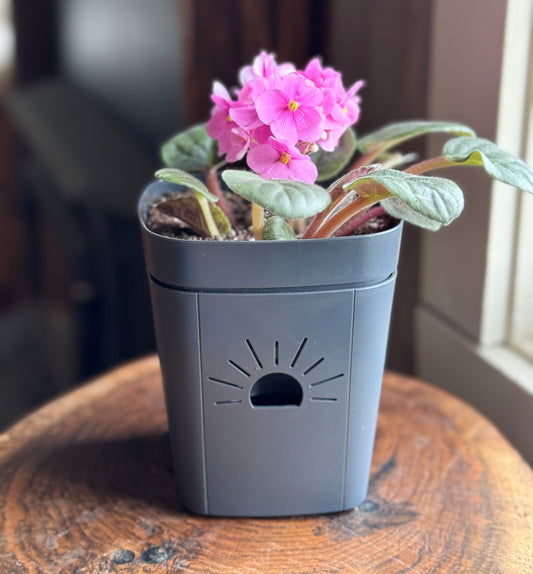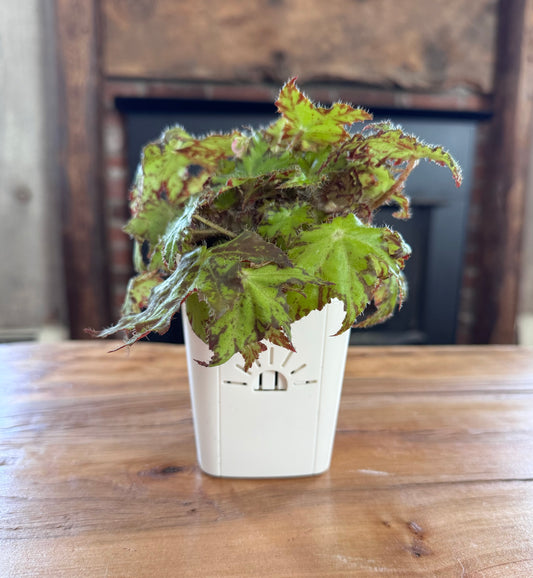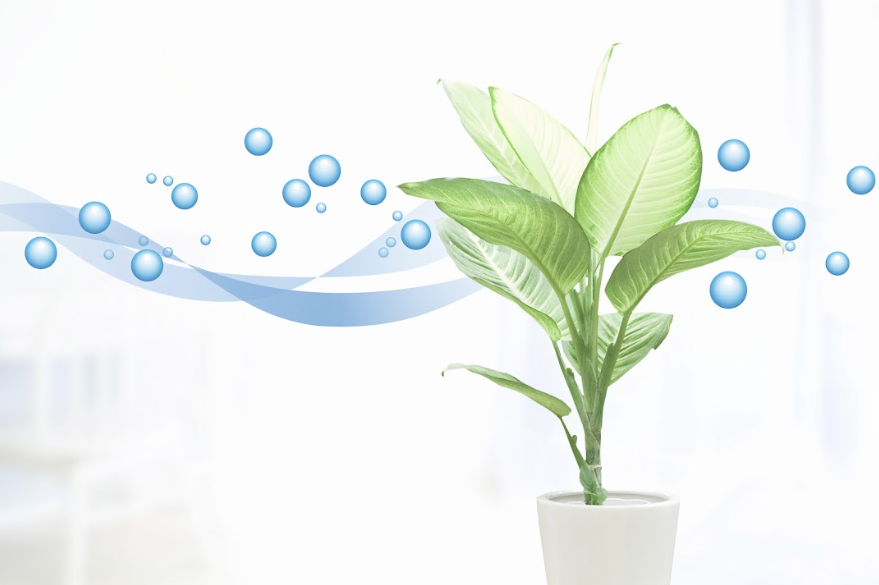Origins
Philodendron is a large genus of flowering plants from the Araceae family. As of September 2015, there are 489 known species. You can view them all HERE. It is the second-largest genus in the family after Anthurium. Philodendron is still not well understood taxonomically, with several species yet to be discovered. Many are grown as ornamental and houseplants. The name comes from the Greek words “Philo,” meaning love, and “dendron,” meaning tree, which reflects in its English name.
Philodendrons have a wide variety of growth methods compared to other plants in the Araceae family. Their leaves come in various shapes, including large, lobed, or deeply cut, oval, spear-shaped, and more. The leaves are alternately placed on the stem, and the plant has two types of leaves – juvenile and adult – that can look very different from each other. Additionally, philodendrons have both aerial and subterranean roots coming from most nodes or internodes.
Philodendrons were collected from the wild as early as 1644 by Georg Marcgraf and classified by Charles Plumier, who collected six species from the islands of Hispaniola, St. Thomas, and Martinique. Then, N.J. Jacquin collected new species in Colombia, West Indies, and Venezuela. At this time, philodendrons were considered to belong to the same genus, Arum. Heinrich Wilhelm Schott improved taxonomy by creating the genus Philodendron in 1829, spelling it ‘Philodendrum,’ and providing a method of classifying based on flowering characteristics in 1832.
Light
Requirements
The philodendron is a robust plant that will tolerate almost any kind of light. Direct sunlight should be avoided, as it can burn the leaves or cause rapid wilting. However, indirect sunlight and areas with low lighting are fine for this species. If placed in an area with lower lighting conditions, some changes may occur, such as larger leaf spreads and duller colors without glossiness. In order to achieve vibrant colors and glossy sheen so often associated with these plants, they should be placed in brighter light, like near an east-facing window.
Genus Summary
| GENUS | Philodendron |
| COMMON NAMES | Heartleaf philodendron. |
| LIGHT | Bright, indirect light |
| WATER SCHEDULE | Naked Root = 14 days |
| WATER REQUIREMENTS | Conventional Planter = water after the top one inch of soil has dried. |
| HUMIDITY | Average, above 40 percent |
| TEMPERATURE | Above 60°F |
| FEEDING | 1x month |
| TOXICITY | Mildy toxic to animals and humans |
| PESTS | Aphids, mealy bugs, scale, and spider mites. |
| DISEASES | Leaf spot disease and root rot |
| POT | Excellent drainage |
| SOIL | Average indoor potting soil |
| FERTILIZER | Diluted liquid fertilizer biweekly in spring/summer only |
| PROPAGATION | Stem cuttings will root in water or soil |
| PRUNING | Only needed if vines become leggy |
| SIZE | 18 inches to 8 feet indoors. |
Water Requirements
If you are growing your philodendron in a Naked Root planter pot, you can follow a 14-day watering schedule.
The philodendron’s natural environment is tropical, so it prefers to be kept moist. During the summer months, ensure that the soil is evenly damp but not soaked. In wintertime, allow the top inch of soil to dry out between waterings. To keep this plant looking glossy and healthy, you can use a spray bottle or cloth to spritz it with water and wipe away dust. Unlike some plants, which may require more careful attention when it comes to watering requirements, the philodendron won’t give you too many surprises. Brown leaves mean it needs more hydration, while yellow leaves indicate overwatering – both are pretty straightforward indicators!
Humidity
Philodendron plants prefer to be in an environment with 40 percent humidity or higher. Most homes are naturally humid enough, so you won’t need a humidifier for the plant unless you live in a very arid climate.
Temperature
In terms of temperature, philodendron plants are very easy to care for. They prefer a warm, temperate climate with temperatures above 60 degrees Fahrenheit both during the day and at night. It’s important to keep your philodendron indoors in cooler months when the temperature outside dips below 60°F. During summer months, however, you can safely place your plant outdoors in a bright spot that’s protected from direct sunlight. Make sure the area still remains cool enough so that nighttime temperatures never dip below 60°F – otherwise, this could cause damage or even death to your beloved plant!
Toxicity
Philodendron is considered mildly toxic for both pets and humans, as oxalic crystals contained within the plant can cause mouth pain and burning when ingested. Symptoms may also include gastrointestinal distress, such as nausea, vomiting, abdominal cramps, or diarrhea. If large amounts of the plant are consumed, it could cause more serious complications, including blockage in the digestive system or even organ failure if left untreated. This is rare because oral burning prevents anyone from consuming large amounts. It can also be a skin irritant in sensitive individuals. It is important to keep this in mind and ensure that children and animals do not consume any part of a Philodendron plant.
Pests and Diseases
One of the best things about philodendrons is they are mostly pest and disease free. The most common pests seen are aphids, mealy bugs, and spider mites. The most common disease to plague a philodendron is root rot from over-watering or growing the philodendron in a water-retaining pot without adequate airflow.
Maintaining an appropriate environment should prevent aphids, mealy bugs, scale, and spider mites from appearing. In the event that you find them, a mist of neem oil and water will take care of them. About seven days later, use a damp cloth to wipe down the plant and apply more neem oil if needed. These pests will continue to eat your philodendron if they are not removed.
In order to reduce the chances of leaf spot diseases, ensure that the soil your philodendron is planted in provides adequate drainage. If signs of leaf spots are noticed, take off the diseased foliage and keep a close eye on your plant. Unfortunately, there is no cure for most leaf spot diseases, but providing good air circulation will help reduce the intensity of potential infections. In the event root rot is detected, take the plant out of its pot, get rid of any brown and mushy roots, and replant it in fresh soil. Do not water it right away and wait about a week before applying irrigation.
Pot
Philodendrons grow well in almost any kind of container, provided there is adequate drainage. They hate having wet roots and will easily develop root rot if allowed to remain soggy. Proper airflow is key to happy Philodendron plants.
Soil
Philodendrons are a great species to begin learning about plant care as they thrive in many soil types. Any quality potting soil will do. Just make sure it is well-draining and retains some moisture. If you want to create your own soil mix, try combining two parts of perlite and sterilized soil with one part of peat moss. This combination should provide enough drainage while still retaining some moisture for your philodendron.
You can also grow your philodendron on a moss pole by gently attaching it to the pole with plant ties or wire and training it as needed, attaching aerial roots where necessary. If you’re growing your philodendron vertically, they usually tend to grow larger leaves when trained upward.
Fertilizer
When it comes to fertilizing your philodendron, you don’t need any fancy products. It’s an easy-to-please plant that will do well with a standard houseplant fertilizer of good quality. Just follow the directions on the package and take note not to feed your philodendron during the fall and winter months – this is especially important for indoor plants, which may experience less light than outdoor plants.
If you’d like, you can dilute the fertilizer of choice to half-strength in order to avoid burning or overfeeding your philodendron. This can help ensure that your philodendron gets all the nutrients it needs without receiving too much at once.
Propagation
When propagating a philodendron, you have two options: rooting stem cuttings or dividing the plant. To root stem cuttings, begin by cutting a vine below a leaf nodule and placing the stem in water. The roots may take anywhere from one week to several weeks to form. Once established, move them into a pot with fresh soil.
Alternatively, you can divide the roots into multiple sections if it is large enough. Make sure each section has healthy roots before planting to increase its chance of survival. If needed, use a sanitized garden knife to carefully separate them before transferring them into pots with fresh, sterilized soil. Finally, be sure to water them lightly after replanting.
Pruning
Pruning Philodendrons is not a necessary chore but can be beneficial in keeping your plant looking neat and tidy. By cutting off long stems that are likely to bend or sag with age, you encourage the plant to produce fresh bushy leaves and retain a full appearance. Additionally, by pruning the stem, you are able to propagate each section into a new individual plant!
10 Striking Varieties and Cultivars
Philodendron is one of the most well-known houseplants. People love its enormous and glossy leaves. Nature has provided a great range of foliage shapes and colors for these plants, and they can survive in interior places even with limited light. With a name like Tree of Love, what’s not to love? Here are a few of our favorite varieties!
Philodendron Hederaceum – Green Heartleaf Philodendron – Green heartleaf philodendron is one of the most popular and recognizable species within the genus. Its common nickname, sweetheart plant, comes from its distinct foliage that looks like little hearts. It can easily be mistaken for pothos due to their similarities in appearance. The leaves are a bright green color which makes it look very lush and full when maintained properly. This variety loves humid places such as bathrooms or other areas with high moisture levels making it an ideal choice for those looking to bring some life into their home without needing too much upkeep. Furthermore, these plants prefer low-light conditions, so they thrive in rooms or halls with less natural lighting than other houseplants. Just make sure not to overwater them! As this species is vining, you may find that it grows up to 20 feet long if given enough space, so keep an eye out for its length and prune every now and again!
Philodendron Bepinnatifidum – Philodendron Xanadu – Philodendron Xanadu is an impressive and eye-catching plant. Its dark green, split leaves have deep lobes that look like plant sculptures. Each leaf grows on a long stem directly from the ground forming one large leaf atop the stalk. They are often mistaken for Monstera plants because of their huge lobed leaves. It is sure to be noticed in any room or space it occupies as it can grow up to 4 feet tall and equally as wide indoors, making it quite hard to miss! Unlike some other varieties of Philodendrons, this one does not vine but rather stays upright with its shrubby nature. Care for this plant requires bright filtered light, well-draining soil, and regular watering when the top inch of soil has dried out.
Philodendron Erubescens – Philodendron Pink Princess – Philodendron pink princess is a beautiful, romantic plant with elongated heart-shaped leaves and a range of colors. The color variations display a spectrum from pastel pink to creamy white, and the green can be anywhere from emerald to lighter gray-green. It’s actually considered a vine, but it can easily be trimmed back for a shrubby, bushy look instead. When grown indoors, these philodendrons usually reach up to 2 feet tall when given proper care and attention.
Philodendron Erubescens – Blushing Philodendron – This variety is an aggressive climber and loves to shimmy up a moss pole. They are highly favored for their leaves, which are shaped like elongated hearts and have a waxy feeling. The leaf color is green with a hint of red. The underside of each leaf has a purple hue, and the stems are deep purple or wine-colored. In the wild, this plant grows an astonishing 60 feet tall, but indoors will usually remain in the three-foot range.
Philodendron gloriosum – Philodendron gloriosum is sure to impress with its striking and unique appearance. Not only do the large, heart-shaped leaves look like they are made of plastic, but their size will also make them a statement piece in any home. The bright green color of the leaves is further complemented by white veins that create an attractive pattern. The variegated cultivar has even more contrast between the dark green and white areas for an even bolder look. With these impressive features, this plant can be a focal point or conversation starter in any room! It’s also worth noting that these huge leaves can reach up to 2 feet in length – certainly not small! This plant requires plenty of light but should be protected from direct sunlight, which may scorch its delicate foliage. Water when the top two inches of soil feels dry, and keep humidity levels high to ensure your Philodendron gloriosum grows healthily!
Philodendron Laciniatum – Oak Leaf Philodendron – Philodendron Laciniatum, also known as the Oak Leaf Philodendron, is a multi-branched climber with glossy, deep green leaves. The lobed foliage resembles oak leaves and grows on long stems that reach upwards. To ensure the best growth for this plant, provide it with a wall or pole to climb along and bright indirect light. These plants are native to Venezuela and Brazil but may be mistaken for other Philodendrons when they are young. One of the distinguishing features of this particular species is its large green leaves with red petioles. Proper care will result in these beautiful plants growing up to nine feet tall!
Philodendron Esmeraldense – Philodendron esmeraldense is a relatively new species, only being discovered in Ecuador as recently as 2008. It is distinguished by its very long leaves, which can reach up to 20 inches in length, and have a stretched-out heart-like shape. These deep green leaves are highlighted with a lime green stripe down the center rib, giving it an interesting look. They also have a leathery texture. This species hangs down from its stems, almost reaching the ground before curving upward again near the tips. Unfortunately, they don’t produce many leaves, but each giant leaf is truly impressive. It’s important to note that this particular species likes acidic soil conditions with pH levels between 5.5 and 6.9. If grown outdoors, they will easily reach 8 feet tall, while indoors, they tend to remain around 4 feet tall at most.
Philodendron Grazielae – Philodendron Grazielae is a stunning beauty originating from the rainforests of Peru and Brazil. It has thick, bulky stems that support its shiny medium-green leaves that resemble hearts in shape and texture. The leaves are incredibly glossy. You can almost see your reflection in them! They require some form of support to climb on, a trellis or pole, for example. This is because the weight of the plant tends to be heavy, and it needs external help to stay upright without breaking off any stems or branches. The growth rate isn’t very fast, but with proper care, this plant will reach up to 3 feet tall eventually! Remember not to place it near direct sunlight as even small amounts of intense light may cause burning on the foliage. Instead, opt for diffused light, such as through a sheer curtain.
Philodendron Brandtianum – Philodendron brandtianum is an excellent choice for its beautiful variegated leaves. It has a similar shape to a heartleaf philodendron but with a much more distinct pattern of olive green and silver stripes between the veins. In fact, the leaves are mostly silver, with olive green shining through. This makes it perfect for adding some elegance to any room. Its fast-growing habit means that indoors it can reach up to 5 feet tall if given something like a trellis or pole for it to cling onto. Provide adequate drainage and keep the temperatures above 50°F for this variety.
Philodendron’ Birkin’ – Philodendron ‘Birkin’ is a unique, beautiful cultivar that will definitely add some style to your home. It has dramatic pinstripes that start from the center of each heart-shaped leaf and reach all the way to its edges. The contrast between dark and light green shades makes this plant stand out even more! It grows up to three feet tall and wide with an upright habit – meaning it has a central stem where all its leaves are attached. This makes for quite an impressive display in any room setting! As if these features weren’t enough, each leaf turns out differently – no two are alike! You’ll never be bored admiring how they turn out every time they grow longer. One thing you should take into consideration when caring for this plant is that it cannot handle even the slightest bit of frost or cold temperatures, so make sure you keep it away from windows or areas with cold drafts.
Summary of Philodendron Plant Care
Philodendrons are popular houseplants for a good reason. They are very easy to care for! Provide bright, indirect light, average household temperatures (over 60°F), and medium humidity, and they will thrive. Feed them with diluted plant food once a month in spring and summer, and trim them up if they get too leggy.





 Verified Buyer
Verified Buyer









